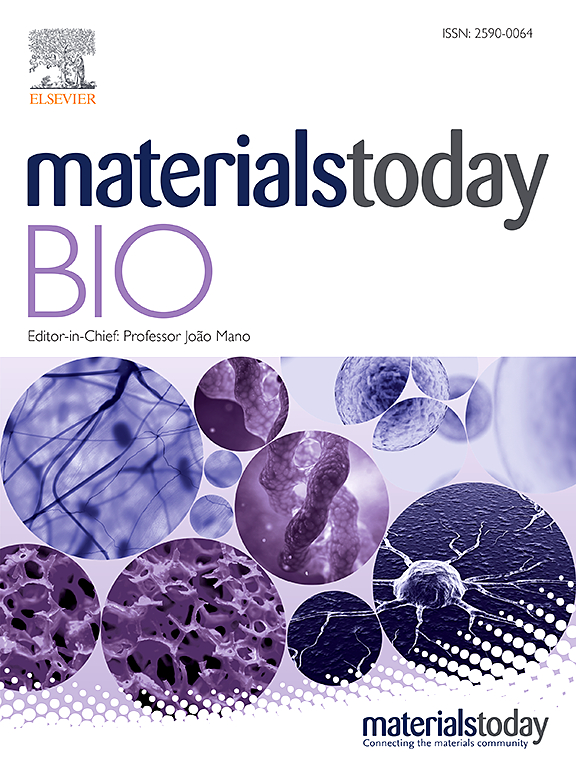Multifunctional micro/nano-textured titanium with bactericidal, osteogenic, angiogenic and anti-inflammatory properties: Insights from in vitro and in vivo studies
IF 8.7
1区 医学
Q1 ENGINEERING, BIOMEDICAL
引用次数: 0
Abstract
Titanium (Ti) is widely used as an implantable material for bone repair in orthopedics and dentistry. However, Ti implants are vulnerable to bacterial infections, which can compromise patient recovery and lead to implant failure. While a controlled inflammatory response promotes bone regeneration, chronic inflammation caused by infections can lead to implant failure. Bone repair is a complex process in which inflammation, angiogenesis and osteogenesis are tightly interconnected, requiring cooperation between mesenchymal stem cells (MSC), macrophages and endothelial cells. Here, we fabricated bio-inspired Ti implants with either microstructured (Micro Ti) or nanostructured (Nano Ti) surface textures that exhibit robust mechano-bactericidal properties. In vitro, both textured surfaces improved blood coagulation and osteogenic marker expression compared to smooth Ti surfaces. Additionally, Nano Ti promoted macrophage polarization towards the M2 phenotype and enhanced the paracrine effects of MSCs on angiogenesis, key processes in tissue regeneration. In vivo kinetic analysis of bone reconstruction in a rat calvarial model showed that Nano Ti improved osseointegration, as evidenced by increased bone volume, mineral density, and bone-implant contact. Notably, the Micro Ti surface showed no significant differences from the control implants. These findings highlight the potential of mechano-bactericidal surface nanopatterns to simultaneously prevent infections and enhance osseointegration by modulating protein adsorption, inflammation, angiogenesis and osteogenesis. This study provides new insights into the development of bifunctional Ti implants, offering new perspectives for the next generation of implantable bone-related biomaterials.

求助全文
约1分钟内获得全文
求助全文
来源期刊

Materials Today Bio
Multiple-
CiteScore
8.30
自引率
4.90%
发文量
303
审稿时长
30 days
期刊介绍:
Materials Today Bio is a multidisciplinary journal that specializes in the intersection between biology and materials science, chemistry, physics, engineering, and medicine. It covers various aspects such as the design and assembly of new structures, their interaction with biological systems, functionalization, bioimaging, therapies, and diagnostics in healthcare. The journal aims to showcase the most significant advancements and discoveries in this field. As part of the Materials Today family, Materials Today Bio provides rigorous peer review, quick decision-making, and high visibility for authors. It is indexed in Scopus, PubMed Central, Emerging Sources, Citation Index (ESCI), and Directory of Open Access Journals (DOAJ).
 求助内容:
求助内容: 应助结果提醒方式:
应助结果提醒方式:


